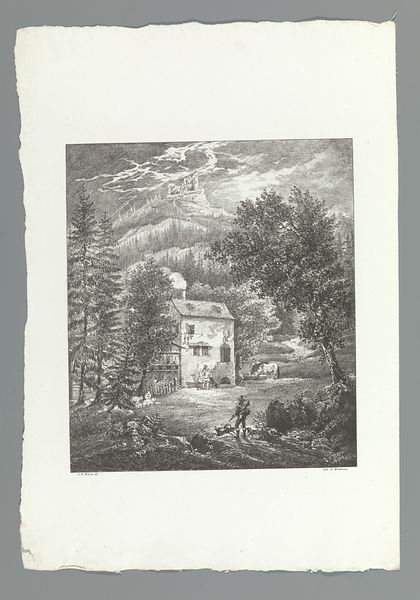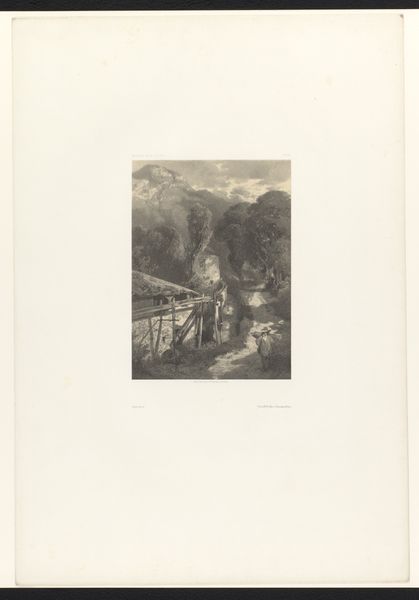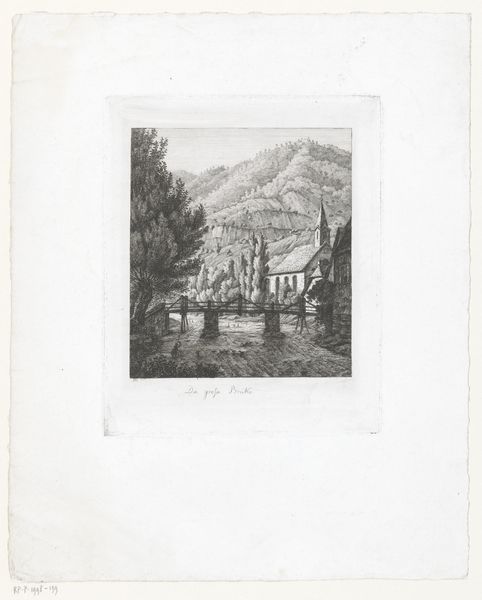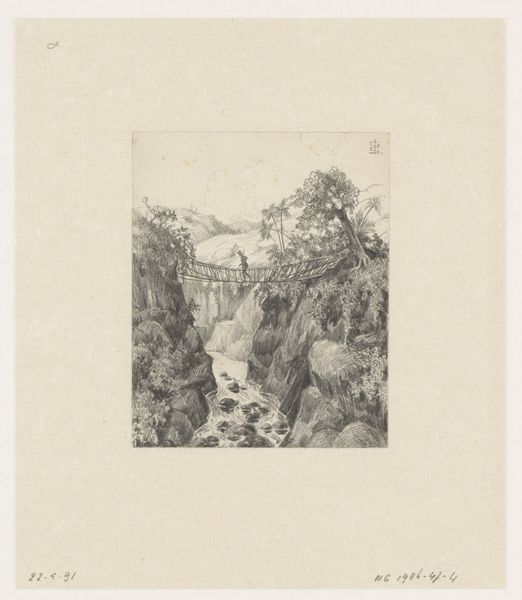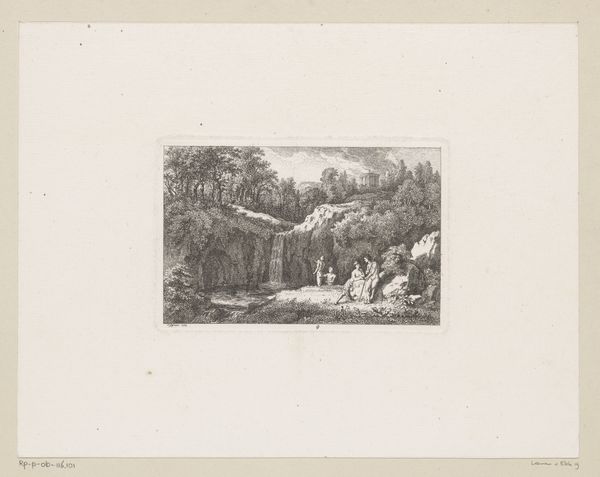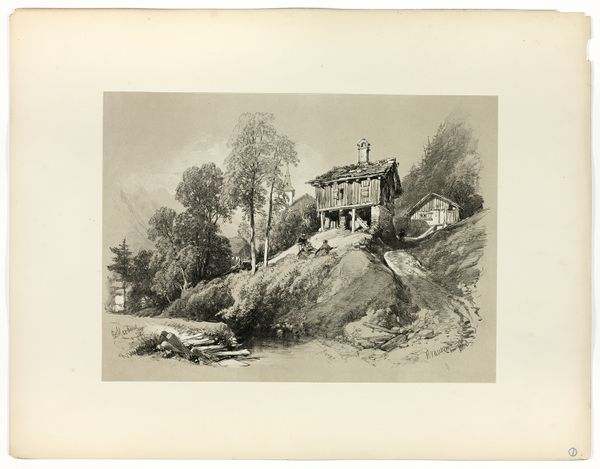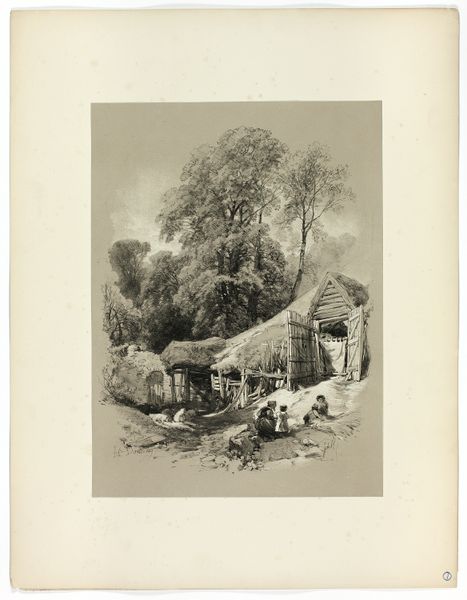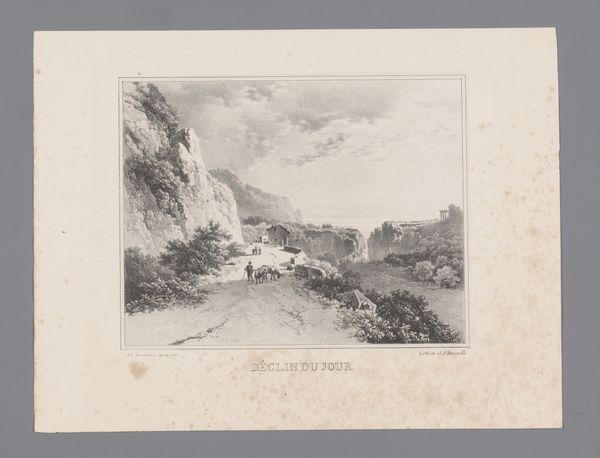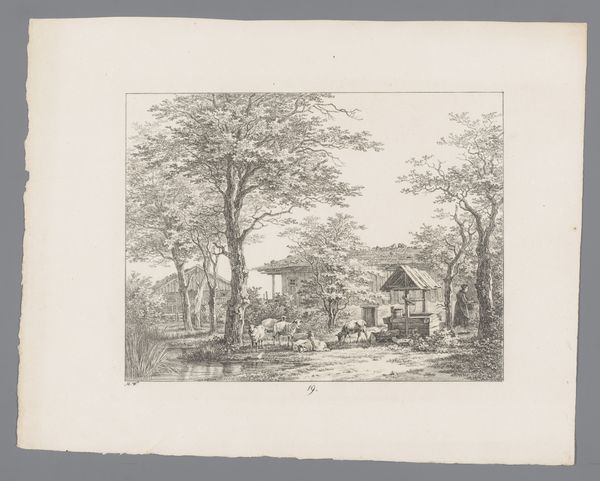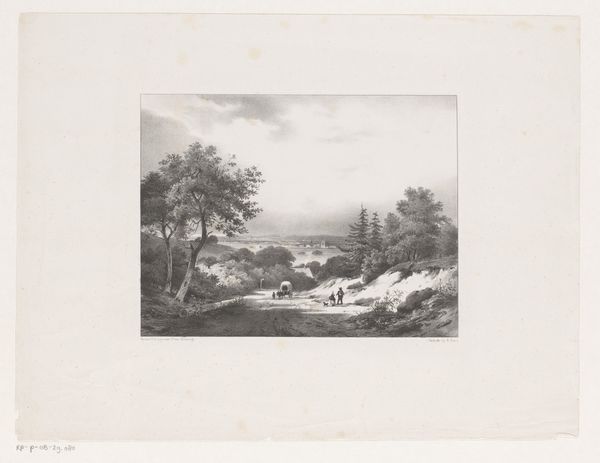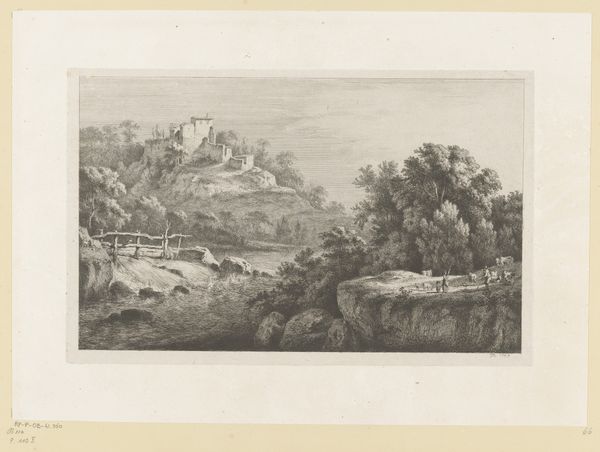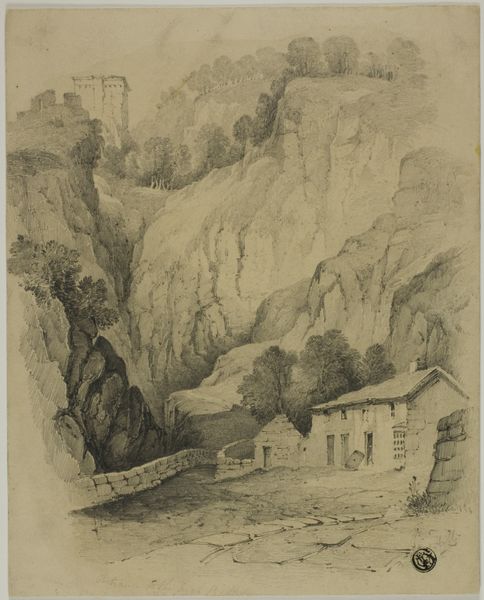
drawing, paper, ink
#
drawing
#
landscape
#
paper
#
ink
#
romanticism
#
mountain
#
genre-painting
#
realism
Dimensions: height 461 mm, width 313 mm
Copyright: Rijks Museum: Open Domain
Curator: "Figuren en paarden bij een huis aan een bergbeek," or "Figures and Horses by a House on a Mountain Stream," crafted in 1822 by Johann Georg Schinz, presents a charming pastoral scene rendered in ink on paper. It immediately evokes a sense of peace and rural simplicity, wouldn't you agree? Editor: Yes, definitely. It’s an interesting contrast between the Romantic fascination with nature and what seems to be a very realistic depiction of everyday life. There's an idealized vision clashing with social realities. I wonder, how does this artwork reflect the social landscape of its time? Curator: Well, Romanticism often looked back to simpler times, imbuing nature with a sense of spiritual and emotional resonance. This scene shows a harmonized existence of humans and animals within nature; water, trees, hills and dwellings blend as a single habitat. Consider the detail: even the figures are unidealized, partaking in practical, quotidian tasks. It's less about grand gestures and more about finding meaning in the common. There is, also, some sublimity, with the hill in the background suggesting the prominence of nature and divine. Editor: So the realism lends a sense of authenticity, which might appeal to a growing urban audience longing for an idealized past, before industrialization irrevocably changed their world? And, how might its exhibition context shape how viewers perceive the scene? A gallery might imbue the scene with high artistic significance that flattens the everyday aspect you pointed out. Curator: Exactly. Romantic landscapes became fashionable subjects within elite art circles. However, they also became part of a rising national cultural awareness across social classes, as Romanticism sought authentic experiences in both Nature and nationhood. Notice the small, almost incidental church steeple in the distance, behind the home: do you interpret that as a social and communal, rather than specifically religious, signal? Editor: An interesting point. The composition and details prompt a deep dive into the socio-political atmosphere of the early 19th century and reveal something far beyond what at first viewing might appear merely idyllic and picturesque. Curator: Precisely. What starts as an exercise in pastoral Romanticism subtly becomes a discourse on social memory and changing values. Editor: The piece then asks us to consider how even seemingly straightforward depictions are shaped by complex negotiations of power and cultural longing. It definitely moves beyond a pretty landscape! Curator: Yes, Johann Georg Schinz’s artwork is much more than the sum of its rustic parts, speaking volumes on historical longing for an idyllic past in an era defined by nascent modernization.
Comments
No comments
Be the first to comment and join the conversation on the ultimate creative platform.
